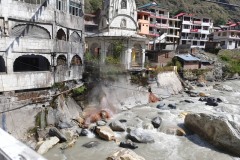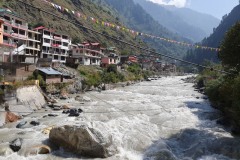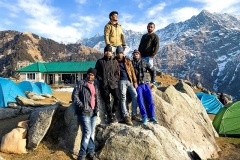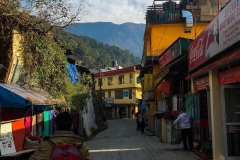














Known as ‘Himachal’s Best Kept Secret,’ Tirthan Valley, situated 1600 meters above sea level, is an ideal retreat endowed with an abundance of natural treasures. If you’re worn out from the cacophony and pollution of daily metro life, here is the ideal spot to be. Named after the immaculate Tirthan River, the valley provides access to the recently designated Great Himalayan National Park (GHNP), which spans 1100 sq km and is a UNESCO World Heritage Site.
With some of the best hiking options in the world, it is a trekker’s paradise. Not to be overlooked are the avian enthusiasts who camp for days in the center of this park. It doesn’t get much better than Tirthan for an escape from the congested Himachali vacations as well as from the congested city life.
The charming valley of Tirthan is best visited in the spring/summer months of March through June. The nice cold weather makes it ideal for discovering the local flora and animals, particularly the apple orchards and verdant meadows. The months of November through February are also ideal for visiting the valley during the winter, particularly for those seeking a place that can withstand freezing weather and receives snowfall. June/July is when the monsoon season starts and lasts until August. When there is moderate to intense rainfall, the area becomes stunning, but it is not very practical for explorers because of the significant reduction in visibility.
Great Himalayan National Park: There are oak and deodar trees in the Great Himalayan National Park. At the Shairopa in the Tirthan Valley, permits are available for the park’s central zone. There are simple to moderate hikes as well as moderate to difficult and demanding excursions available in the park.
Serolsar Lake: The village’s other main draw, Serlosar Lake, is roughly 5 km from Jalori Pass. With a dense canopy of oak trees, the stroll from Jalori Pass to the lake is just as charming. Situated approximately 3,100 meters above sea level, the lake is thought to provide therapeutic qualities.
Chhoi Waterfalls: It takes around one hour to walk the 3 kilometers to reach Chhoie Waterfall in Tirthan Valley, starting from Village Nagini. The waterfall has the name Chhoi Mata, a local goddess who is worshipped by the villagers at one of the trees in front of the waterfall.
Jalori Pass: At a height of 3120 meters above sea level, Jalori Pass, which is around 80 kilometers from Kullu, is a breathtaking location for hiking and picnics. Prepare your lunch, pack your suitcase, and lace up your shoes so you may take in the breathtaking vista of the massive Himalayas, which includes Dhauladhar poking out in the distance.
It’s strongly recommended to arrange a homestay in Tirthan to ensure a comfortable stay. Not only will you experience the local cuisine and culture, but you’ll also get the best feeling of staying at home—as they say, there’s no place like home. Everybody wants to own a house in the mountains, on the shore, in a secluded town, a tiny cottage with a lawn and a kitchen garden to cook in, and a yard where our dogs may run.
This is precisely what homestays offer! The majority of these homestays are situated in some of the most gorgeous areas, nearer to the natural world than any hotel could hope to be. These homestays, which are run by the incredibly kind and accommodating locals, provide quotes that include all three meals per day.
If you are traveling from a central place, like as Delhi, the best method to go to Tirthan Valley is to arrange a road trip. If not, you can take a train to the closest train stations (Kiratpur or Ambala) and then take a bus or hire a taxi to get to the destination. If you want to fly, the closest airport is Bhuntar, which is two hours’ drive from Tirthan Valley. If traveling by bus from Chandigarh or Delhi, disembark in Aut, which is located three hours from Manali and 19 km before Bhuntar. From there, take a taxi or a local bus to Banjar or Jibhi. The thirty-kilometer trip from Aut to Tirthan Valley would set you back between 800 and 1000 INR.
The closest airport to Tirthan Valley is at Bhuntar, which is around 48 kilometers away.
The closest train stations to the site are Kiratpur and Ambala, both of which have excellent rail connections to a number of other cities. From these train stations, you can go to the valley via bus or taxi.
Regular bus services from nearby states including Delhi, Punjab, and Haryana are provided by the HPTDC. You can take a bus to Aut, which is only 26 km away from your location, and travel to Tirthan Valley from there. From there, taxis are easily accessible all the way to the town. Jalori Pass (27 miles) and Shoja (22 km) are further choices.